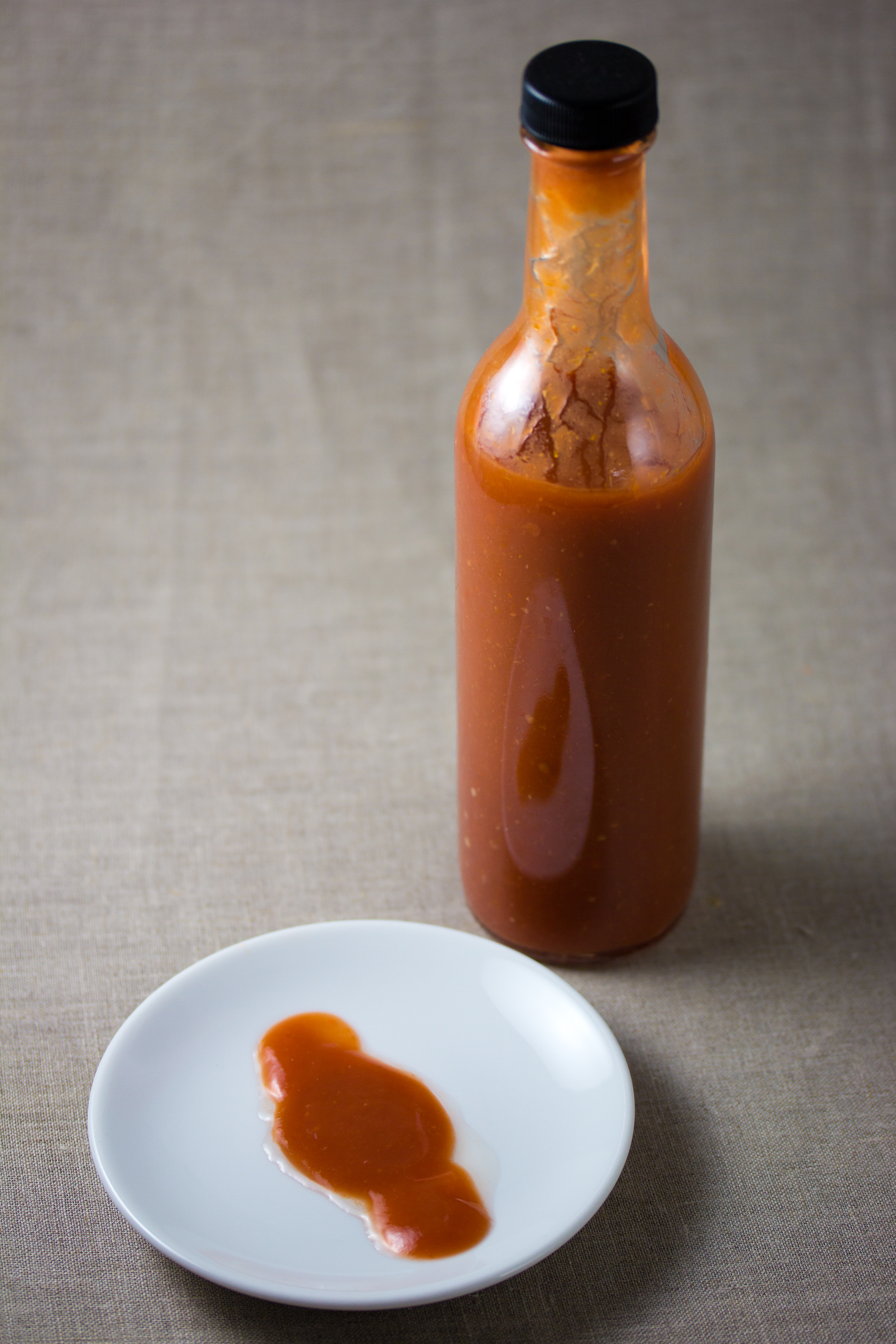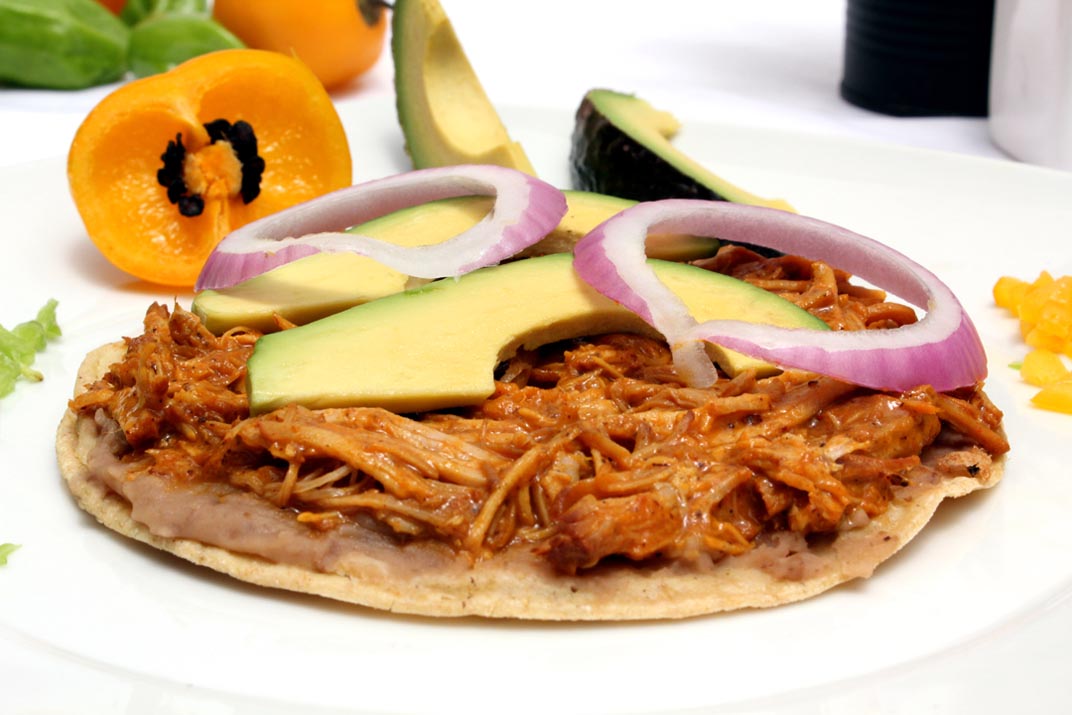|
Xnipec
Xnipec (; meaning 'dog snout') is a spicy sauce native to the Yucatán peninsula, made with habanero pepper, purple onion, bitter orange juice and salt. Sometimes oregano, vinegar, bay leaf, coriander or pepper are also used. If sweet orange is used, lemon juice can be added to acidify it; if sour orange is used, it is not necessary. It is also called in a generic way Yucatecan sauce (''salsa yucateca'') or pickled onions (''cebollas encurtidas''). Since the Mayan-Spanish transliteration is not standardized, the ways of writing are various; other common spellings are: ''ixnipec'', ''xnepec'', ''xni'pek'', ''ni'peek'', ''x-ni-pec'', ''xnepek'', etc., where ''peek'' means 'dog' and ''ni'' means 'nose'. It is similar to another very popular sauce in Mexico, pico de gallo, and it is very present in the peninsular cuisine, where it is used regularly to accompany various typical dishes: chocolomo, salpicón, poc chuc, tikin xic, etc. It is the traditional accompaniment to the popula ... [...More Info...] [...Related Items...] OR: [Wikipedia] [Google] [Baidu] |
Pico De Gallo
''Pico de gallo'' (, ), also called ''salsa fresca'' ('fresh sauce'), ''salsa bandera'' ('flag sauce'), and ''salsa cruda'' ('raw sauce'), is a type of salsa commonly used in Mexican cuisine. It is traditionally made from chopped tomato, onion, and serrano peppers (jalapeños or habaneros may be used as alternatives), with salt, lime juice, and cilantro. ''Pico de gallo'' can be used in much the same way as other Mexican liquid salsas. Because it contains less liquid, it also can be used as a main ingredient in dishes such as tacos and fajitas. The tomato-based variety is widely known as ''salsa picada'' ('minced/chopped sauce'). In Mexico it is normally called ''salsa mexicana'' ('Mexican sauce'). Because the colours of the red tomato, white onion, and green chili and cilantro are reminiscent of the colours of the Mexican flag, it is also called ''salsa bandera'' ('flag sauce'). In many regions of Mexico the term ''pico de gallo'' describes any of a variety of salads (inclu ... [...More Info...] [...Related Items...] OR: [Wikipedia] [Google] [Baidu] |
Mexican Cuisine
Mexican cuisine consists of the cooking cuisines and traditions of the modern country of Mexico. Its earliest roots lie in Mesoamerican cuisine. Its ingredients and methods begin with the first agricultural communities such as the Olmec and Maya who domesticated maize, created the standard process of maize nixtamalization, and established their foodways. Successive waves of other Mesoamerican groups brought with them their own cooking methods. These included: the Teotihuacanos, Toltec, Huastec, Zapotec, Mixtec, Otomi, Purépecha, Totonac, Mazatec, Mazahua, and Nahua. With the Mexica formation of the multi-ethnic Triple Alliance (Aztec Empire), culinary foodways became infused (Aztec cuisine). Today's food staples native to the land include corn (maize), turkey, beans, squash, amaranth, chia, avocados, tomatoes, tomatillos, cacao, vanilla, agave, spirulina, sweet potato, cactus, and chili pepper. Its history over the centuries has resulted in regional cuisines based on ... [...More Info...] [...Related Items...] OR: [Wikipedia] [Google] [Baidu] |
Yucatec Maya Language
Yucatec Maya (; referred to by its speakers simply as Maya or as , is one of the 32 Mayan languages of the Mayan language family. Yucatec Maya is spoken in the Yucatán Peninsula and northern Belize. There is also a significant diasporic community of Yucatec Maya speakers in San Francisco, though most Mayan Americans are speakers of other Mayan languages from Guatemala and Chiapas. Etymology According to the Hocabá dictionary, compiled by American anthropologist Victoria Bricker, there is a variant name , literally "flat speech"). A popular, yet false, alternative etymology of Mayab is "ma ya'ab" or "not many," "the few" which derives from New Age spiritualist interpretations of the Maya. The use of "Mayab" as the name of the language seems to be unique to the town of Hocabá, as indicated by the Hocabá dictionary and is not employed elsewhere in the region or in Mexico, by either Spanish or Maya speakers. As used in Hocabá, "Mayab" is not the recognized name of the la ... [...More Info...] [...Related Items...] OR: [Wikipedia] [Google] [Baidu] |
Hot Sauces
Hot sauce is a type of condiment, seasoning, or salsa made from chili peppers and other ingredients. Many commercial varieties of mass-produced hot sauce exist. History Humans have used chili peppers and other hot spices for thousands of years. Inhabitants of Mexico, Central America and South America had chili peppers more than 6,000 years ago. Within decades of contact with Spain and Portugal in the 16th century, the New World plant was carried across Europe and into Africa and Asia, and altered through selective breeding. One of the first commercially available bottled hot sauces in America appeared in 1807 in Massachusetts. Few of the early brands from the 1800s survived to this day, however. Tabasco sauce is the earliest recognizable brand in the United States hot sauce industry, appearing in 1868. As of 2010, it was the 13th best-selling seasoning in the United States preceded by Frank's RedHot Sauce in 12th place, which was the sauce first used to create buffalo wings. I ... [...More Info...] [...Related Items...] OR: [Wikipedia] [Google] [Baidu] |
Scoville Scale
The Scoville scale is a measurement of the pungency (spiciness or "heat") of chili peppers, as recorded in Scoville heat units (SHU), based on the concentration of capsaicinoids, among which capsaicin is the predominant component. The scale is named after its creator, American pharmacist Wilbur Scoville, whose 1912 method is known as the Scoville organoleptic test. The Scoville organoleptic test is a subjective assessment derived from the capsaicinoid sensitivity by people experienced with eating hot chilis. An alternative method, high-performance liquid chromatography (HPLC), can be used to analytically quantify the capsaicinoid content as an indicator of pungency. As of 2011, the subjective organoleptic test has been largely superseded by analytical methods such as HPLC. Scoville organoleptic test In the Scoville organoleptic test, an exact weight of dried pepper is dissolved in alcohol to extract the heat components (capsaicinoids), then diluted in a solution of sugar wa ... [...More Info...] [...Related Items...] OR: [Wikipedia] [Google] [Baidu] |
Panucho
A Panucho is a Mexican food specialty from the Yucatán made with a refried tortilla that is stuffed with refried black beans and topped with chopped cabbage, pulled chicken or turkey, tomato, pickled red onion, avocado, and pickled jalapeño pepper. Panuchos are mostly sold in the evenings when parties of friends or family go out to eat. Panuchos are served at fast food restaurants called panucherias which also serve salbutes, tostadas, tortas, and caldo Caldo may refer to: Food * Broth, whose Spanish name is ''caldo'' * Caldo de costilla ("rib broth"), served as breakfast in Colombia * Caldo de pollo, Latin American chicken soup * Caldo de queso, also known as Sonoran cheese soup, served in centr ...s. Panuchos are fried and topped to order and often served with soda. References {{Mexican cuisine Cuisine of Yucatán Tortilla-based dishes ... [...More Info...] [...Related Items...] OR: [Wikipedia] [Google] [Baidu] |
People Magazine
''People'' is an American weekly magazine that specializes in celebrity news and human-interest stories. It is published by Dotdash Meredith, a subsidiary of IAC (company), IAC. With a readership of 46.6 million adults in 2009, ''People'' had the largest audience of any American magazine, but it fell to second place in 2018 after its readership significantly declined to 35.9 million. ''People'' had $997 million in advertising revenue in 2011, the highest advertising revenue of any American magazine. In 2006, it had a circulation of 3.75 million and revenue expected to top $1.5 billion. It was named "Magazine of the Year" by ''Advertising Age'' in October 2005, for excellence in editorial, circulation, and advertising.Martha Nelson Named Editor, The People Group , a ... [...More Info...] [...Related Items...] OR: [Wikipedia] [Google] [Baidu] |
Cochinita Pibil
Cochinita pibil (also puerco pibil or cochinita con achiote) is a traditional Yucatec Mayan slow-roasted pork dish from the Yucatán Peninsula. Preparation of traditional cochinita involves marinating the meat in strongly acidic citrus juice, adding annatto seed, which imparts a vivid burnt orange color, and roasting the meat in a píib while it is wrapped in banana leaf. Methods ''Cochinita'' means baby pig, so true cochinita pibil involves roasting a whole suckling pig. Alternatively, pork shoulder (butt roast), or pork loin is used in many recipes. The high acid content of the marinade and the slow cooking time tenderizes the meat, allowing otherwise tough pieces of meat to be used. The Yucatecan recipes always employ the juice of Seville or bitter oranges for marinating. In areas where bitter oranges are not common, juice of sweet oranges combined with lemons, limes, or vinegar are employed to approximate the effect of the bitter orange on the meat. Another important in ... [...More Info...] [...Related Items...] OR: [Wikipedia] [Google] [Baidu] |
Poc Chuc
Poc chuc is a Mexican dish of meat, commonly pork, that is prepared in citrus marinade and cooked over a grill. Poc chuc is often served with a side of rice, pickled onion, refried beans, and avocado. Poc chuc is one of the signature dishes of the Yucatán. Etymology The term poc chuc is made up of two Mayan Mayan most commonly refers to: * Maya peoples, various indigenous peoples of Mesoamerica and northern Central America * Maya civilization, pre-Columbian culture of Mesoamerica and northern Central America * Mayan languages, language family spoken ... words: ''poc'', which means to toast, especially on hot embers, and ''chuc'', which is charcoal. References Meat dishes Cuisine of Yucatán Pork dishes {{Mexico-cuisine-stub ... [...More Info...] [...Related Items...] OR: [Wikipedia] [Google] [Baidu] |
Salpicón
Salpicon (or salpicón, meaning "hodgepodge" or "medley" in Spanish) is a dish of one or more ingredients diced or minced and bound with a sauce or liquid. There are different versions found in Spanish and the broader Latin American cuisine. A salpicon is sometimes used as stuffing. In Mexican cuisine and Central American cuisine, the term refers to a salad mixture containing thinly sliced or chopped flank steak, onion, oregano, chile serrano, avocado, tomatoes, and vinegar. The mixture is commonly served on tostadas, tacos or as a filling of poblano peppers. In Honduras, rabbit meat is used. In Colombian cuisine, salpicón is a fruit cocktail beverage made with a base of watermelon and/or orange juice, which gives it its bright red color, and soda water. Notes References * ''Le Guide Culinaire'' by Auguste Escoffier, Flammarion, Paris (1903) * ''Larousse Gastronomique ' () is an encyclopedia of gastronomy. The majority of the book is about French cuisine, and contains rec ... [...More Info...] [...Related Items...] OR: [Wikipedia] [Google] [Baidu] |
.jpg)




